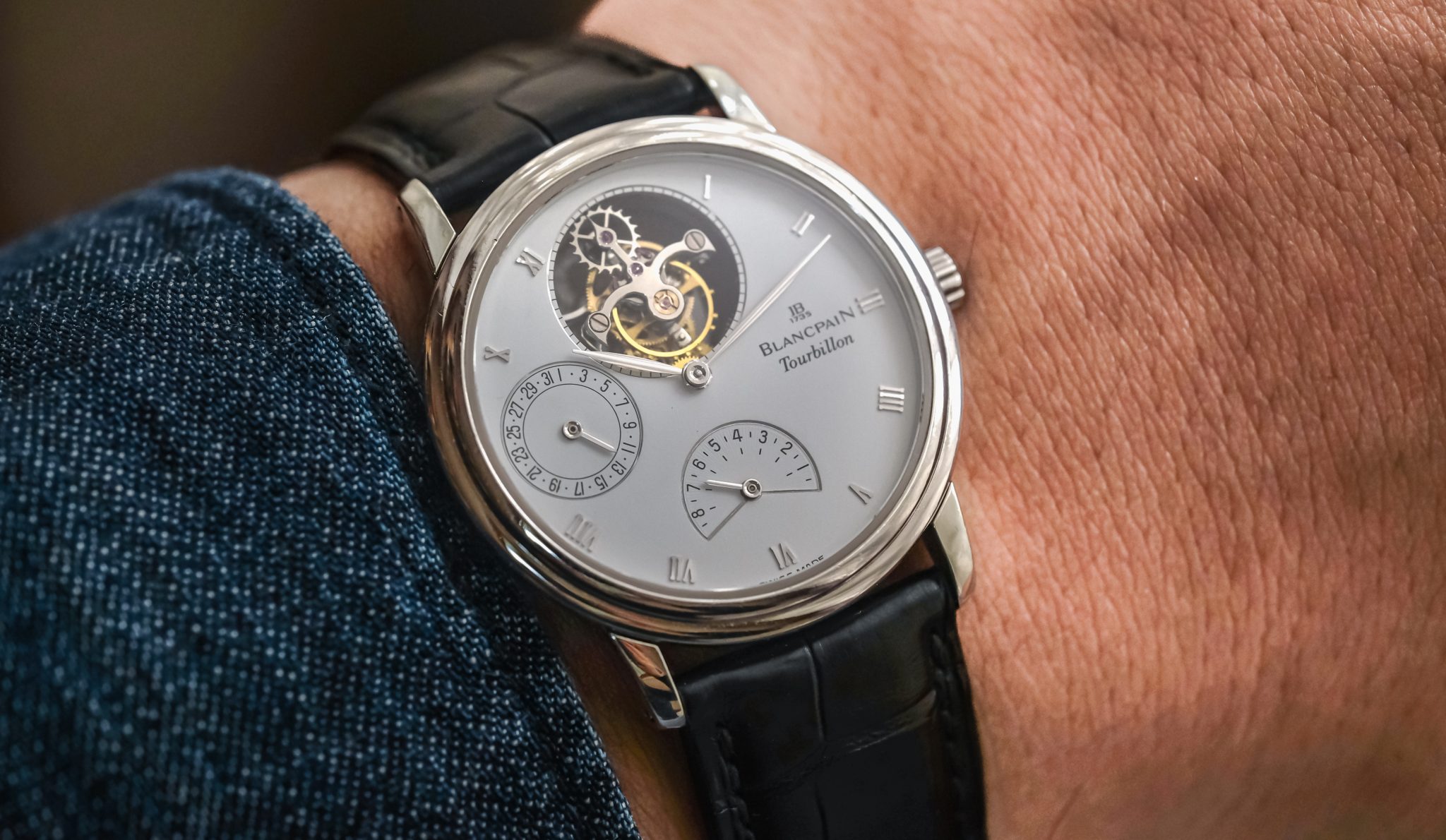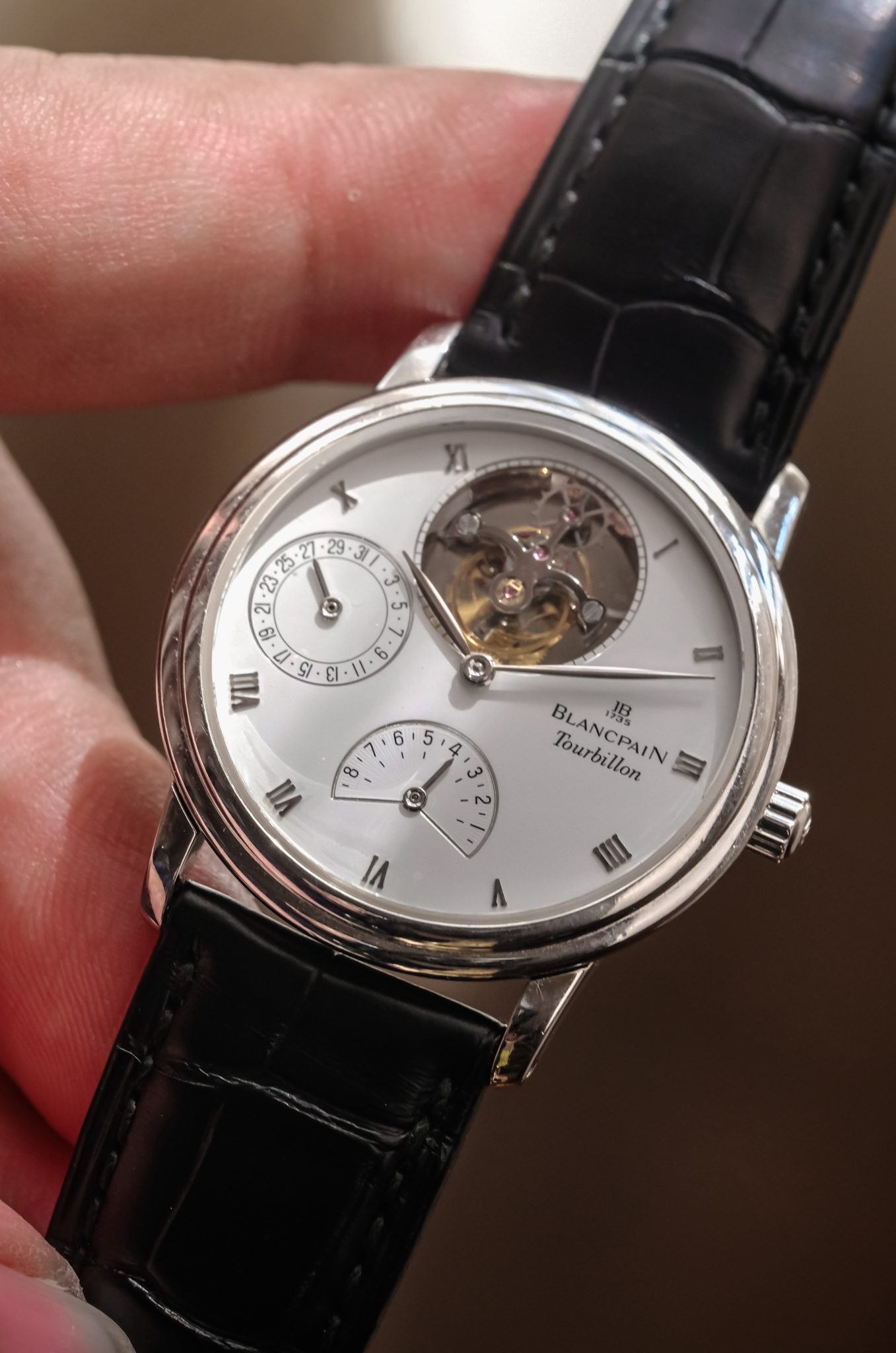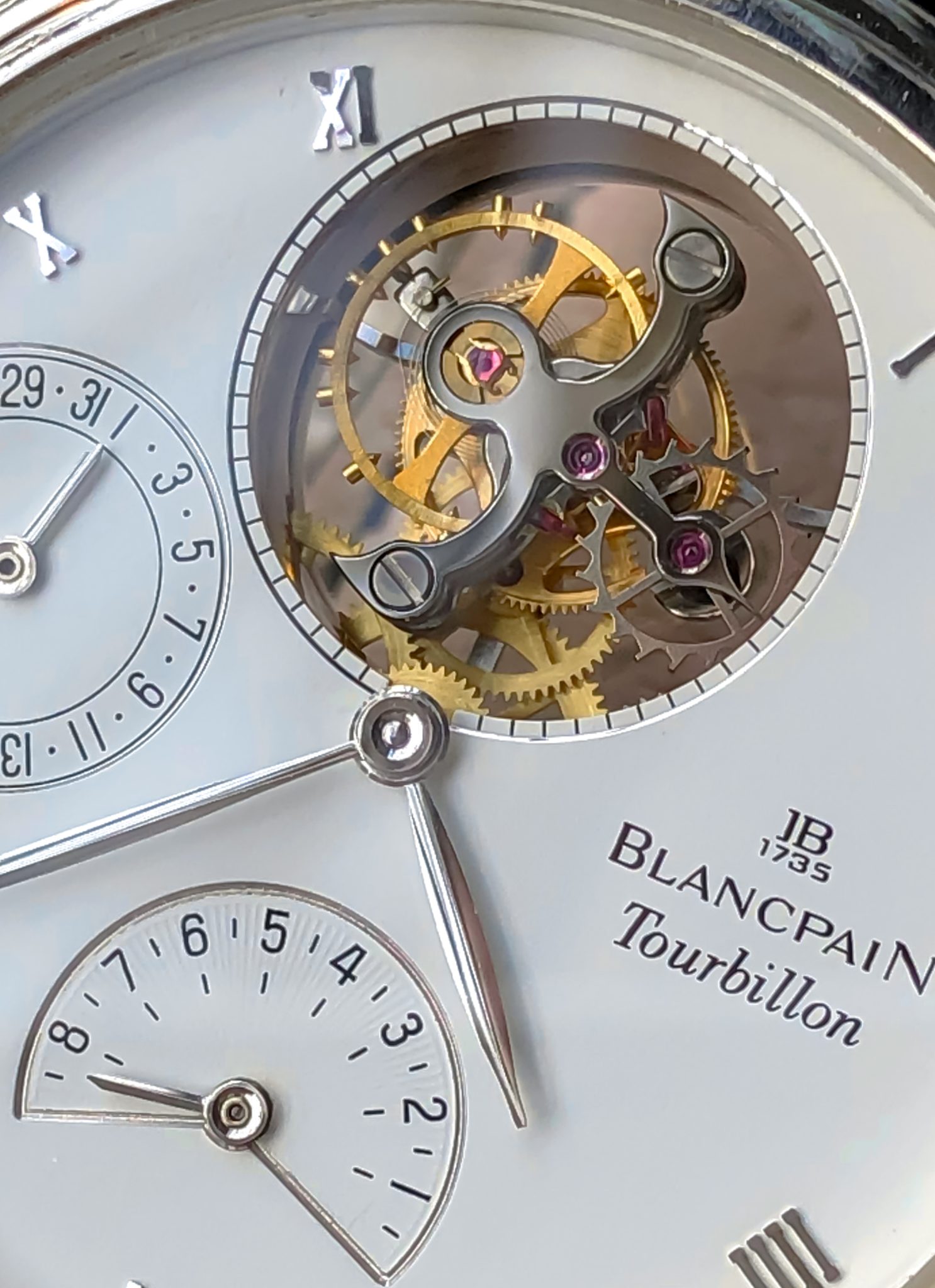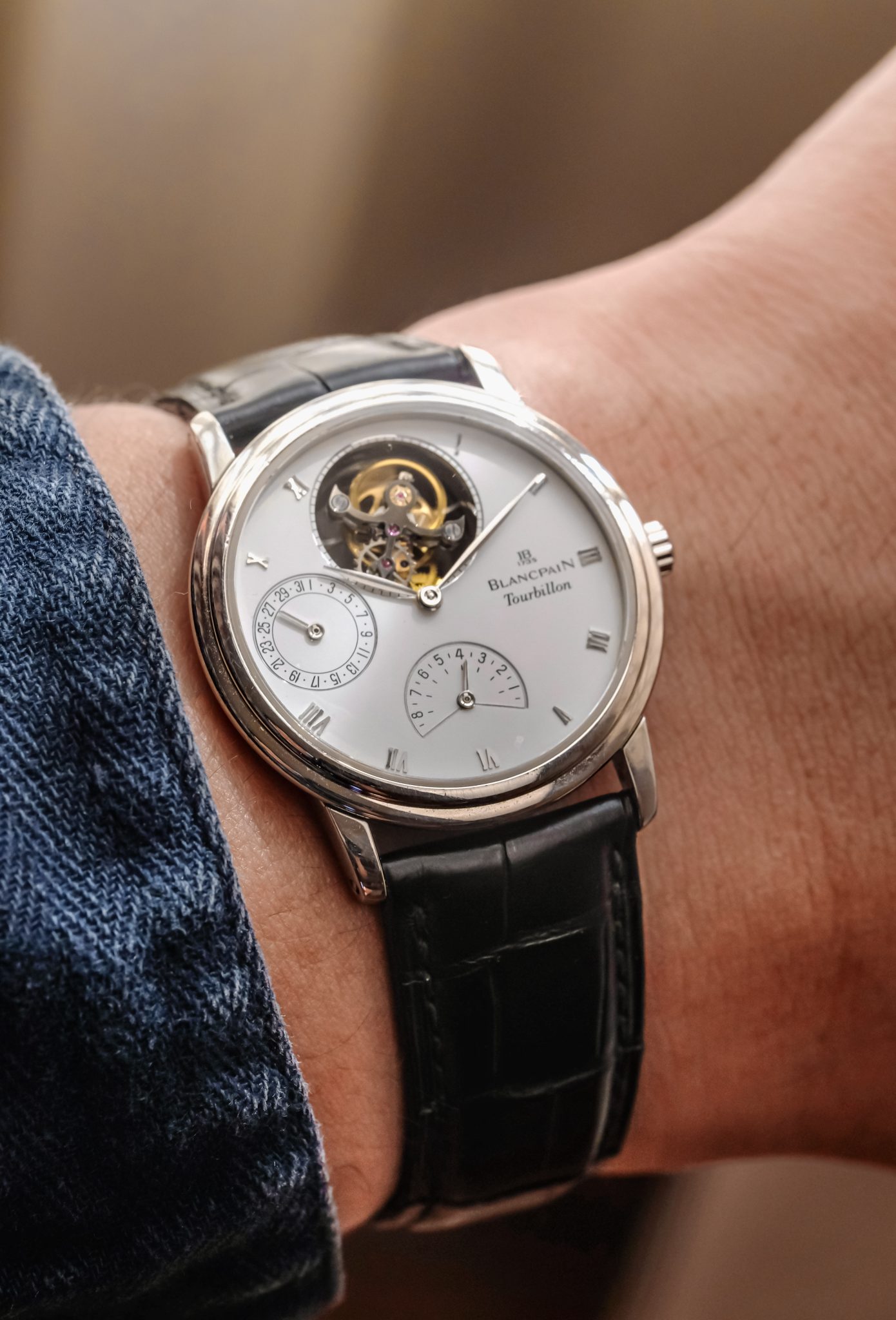
0023 Blancpain Flying Tourbillon
Recently, a well-known collector and watch media personality stated in an interview that, ‘As vintage becomes more unattainable to most, collectors are turning to neo-vintage.’ That’s about as correct as George W. Bush was when he stated, ‘We know that Saddam Hussein has weapons of mass destruction.’ Neo-vintage isn’t on the rise because older alternatives are more valuable. Things need to be contextualized over time and we’ve only recently come to understand just how impressive many accomplishments here were (and it’s not like watch media or Instagram existed in the late 90s, these releases were much less documented). Only in light of recently expanding scholarship have we begun to understand how many firsts and accomplishments were achieved, all in more classic proportions and under sapphire. For example, this: the world’s first wristwatch flying tourbillon and it just so happens to have an eight day reserve.


Biver and Blancpain reshaped the terrain of Swiss watchmaking in the early 90s with the ‘six masterpieces’: an ultra-thin, calendar moonphase, qp, minute repeater, split seconds, and this ref. 0023 flying tourbillon all released slowly over the decade. ‘Flying’ here meaning that the dial-side display of the tourbillon is unobstructed by a bridge of any sort, with the cage connecting to the movement on its backside only. This was pioneered, like most things, by AL Breguet but only applied to wristwatches first here. The solution required one infinitesimally small ball bearing on a rear-facing bridge to support the entire carousel, quite an accomplishment.
The calibre was designed by Vincent Calabrese exclusively for Frédéric Piguet and Blancpain. Moreover, despite the complication, its case is only a miraculous 7.5mm thin. This made it the world’s thinnest hand-wound tourbillon at launch. And still, the team somehow managed to include an eight-day power reserve. It’s almost a bit Journe how Blancpain managed to keep a constant case proportion despite a range of immensely impressive complications. In their totality, the 90s and early 2000s are going to be viewed how many collectors view the late 60s today. Many groundbreaking designs were solidified and found their footing. Boundaries were pushed. And JCB wasn’t high on his own supply or profits. It’s an era of Swiss watches than oozes passion and celebration of a return to form. This isn’t hype. It definitely isn’t a consolation prize to vintage. It’s overdue.


This example is a platinum, considerably harder to find than yellow or white golds. It’s in great nick. The case is full, with deep hallmarks. Its dial likewise shows no signs of damage. The calibre was serviced in July ’23 which is great, as it’s quite a complex beast and nice to know it’s running well. It comes from a well-regarded Singaporean collector, @horologically_unique on Instagram, watch only.











